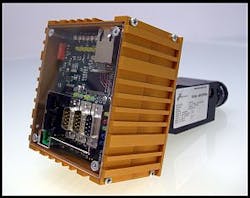Smart camera from Inno-spec facilitates recycling processes
PRESS RELEASE
The separation of materials is a decisive functional stage in the recycling process and comprises the recognition and separation of various used objects and materials. Today, the sorting of plastics within the framework of recycling is primarily carried out using NIR spectrometer systems and is applied in the processing of packaging plastics, surrogate fuels and in the recycling of use electrical equipment. The disadvantage of this process to date: The depth of material processing is relatively minimal because the costs of the NIR sensors and data transfer / processing are very high. Through an efficient combination of new technologies, the Nuremberg company inno-spec has succeeded in making a decisive step forward in the field of recycling: With a new combination of technology from spectral imaging, the use of CMOS sensors in the spectral range from 700 to 1,000 nm (VIS-NIR limit range) and the development of extremely high-speed data processing, inno-spec has devised a new form of smart camera for economical, rapid and reliable material recycling.
According to Oliver Grass, managing director of inno-spec GmbH, the new process will have clear advantages: “In addition to clear cost reductions with regards to the sensors, the reliability, robustness and availability of sensor-supported sorting systems will be greatly improved in comparison to the present status of industrial technology".
VIS-N²IR Smart Camera Sets New Benchmarks
With a fixed conveyor belt width, the material turnover and the fraction purity level - decisive economic variables in materials sorting – are determined not only by the production parameters or belt speed and belt coverage density, but also to a large extent by the performance of the sensor system. This is dependent on the so-called scanning frequency and the local and spectral resolution of the NIR sensor unit in conjunction with the computing power given the respective material classification. With the project VIS-N²IR (N²IR stands for very near infrared range) new benchmarks have been set by inno-spec, in relation to standard engineering practice, in the three parameter categories of scanning frequency, local resolution and computing power with the respective material classification (spectral imaging). “For the first time, sensor system performance parameters that were previously only conceivable – and even then only partially – with extremely high-cost components, are attained in this price range” Grass continues.
The core concept, upon which attaining this objective was founded, was the replacement of the former costly sensor parts based on InGaAs (indium gallium arsenide) or HgCdTe (mercury cadmium telluride) with economical CMOS (complementary metal oxide semiconductor) photoarrays.
inno-spec GmbH
Sigmundstrasse 220,
90431 Nuremberg
Tel.: 0911-376691-0
email: [email protected]
www.inno-spec.de
